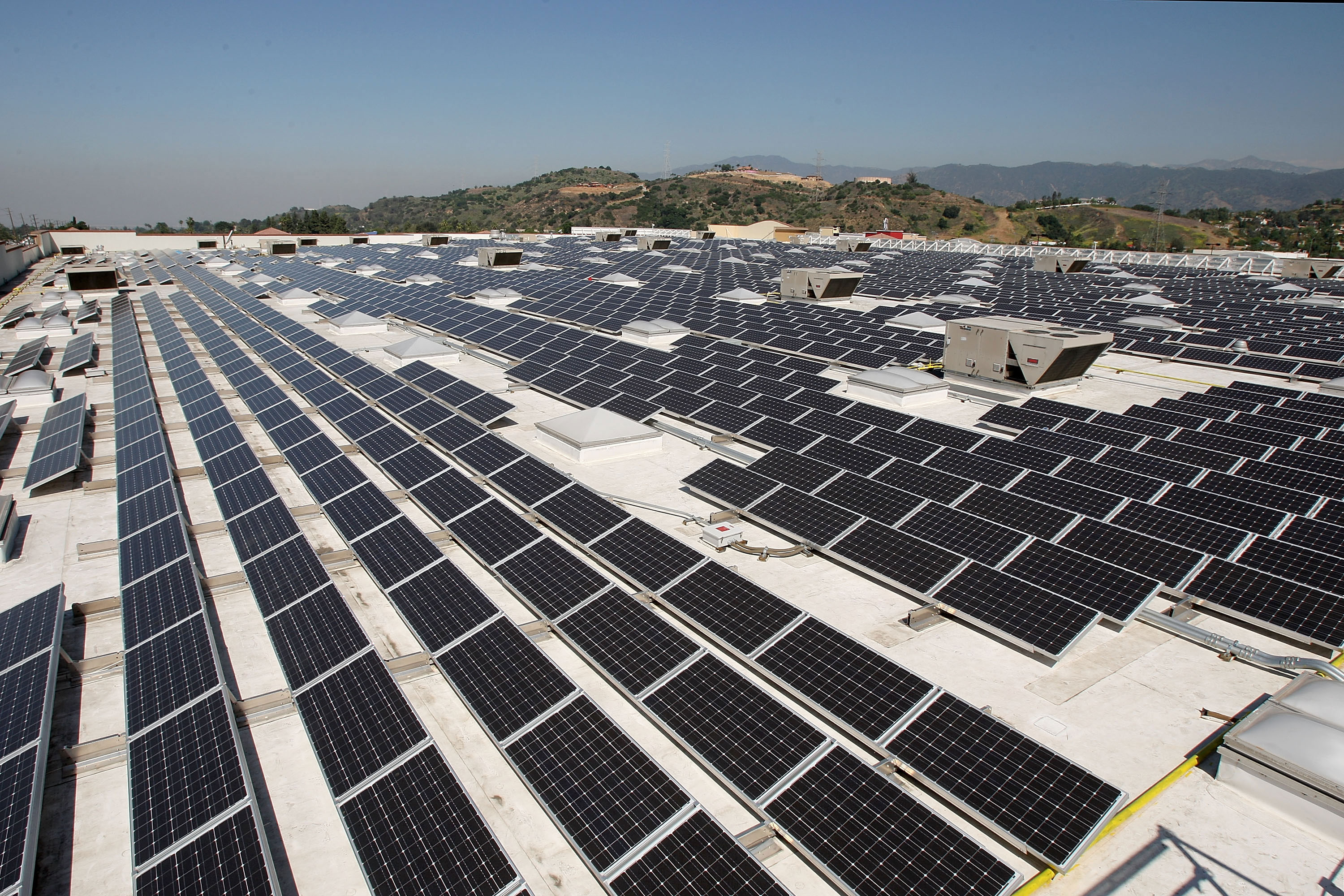Big-box retailers are among the leading users of solar energy, according to a new report.
Target and Walmart are the third- and fourth-highest consumers of solar energy, respectively, using panels on the roofs of their stores and distribution centers and at off-site generation plants, according to the Solar Energy Industries Association’s Solar Means Business Report. (Apple and Amazon.com occupy the first and second positions, respectively.)

Solar panels atop a Sam's Club in Glendora, Calif.
Solar energy investment has soared within just the past three years — slightly more than half of the current U.S. solar capacity has been installed over that brief period.
Target has a stated goal of relying on renewable electricity for 100 percent of its energy needs by 2030. Today some 22 percent of its power comes from renewable sources, the retailer says. Target has rooftop panels on approximately one-quarter of its nearly 1,900 U.S. stores.
Walmart, for its part, says it wants to be using renewable energy for half of its power needs by 2025. The company at present uses sustainable electricity for roughly 28 percent of those needs globally and says it anticipates this will rise to about 35 percent by 2020. “Over the past year, Walmart completed contracts for 136 new renewable-energy projects, which will supply the company an additional estimated 2.14 billion kilowatt-hours of renewable energy annually — the equivalent electricity usage of over 260,000 homes in a year,” the company said.
Target has some 242.4 megawatts of installed capacity, while Walmart has about 208.9 megawatts, the report says. By comparison, No. 1 solar-power consumer Apple has 393.3 megawatts of installed capacity.
By Edmund Mander
Director, Editor-In-Chief/SCT

